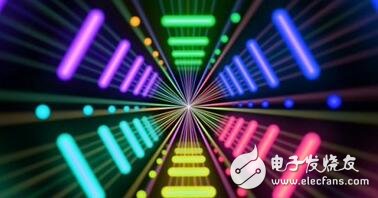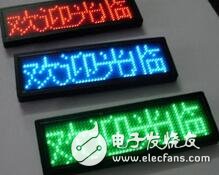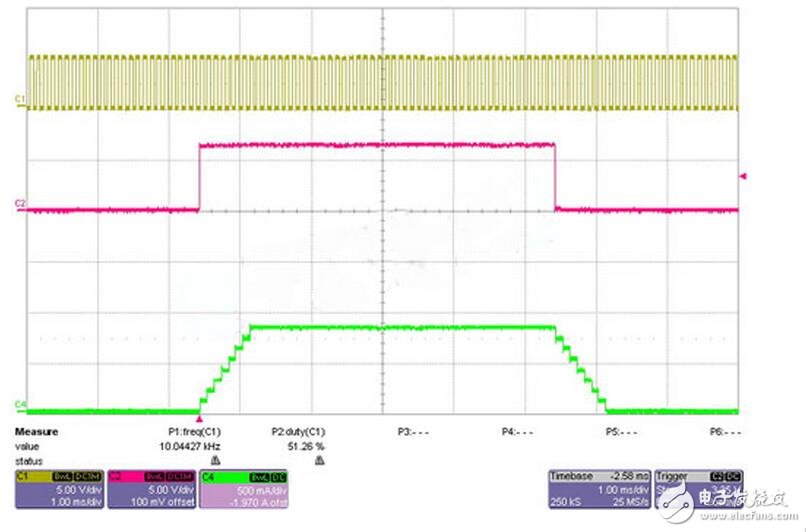At present, lighting consumption accounts for about 20% of the total power consumption, greatly reducing lighting power is an important way to save energy. To achieve this goal, the industry has researched and developed many kinds of energy-saving lighting equipment, and achieved certain results. However, the requirement for 'green lighting' is far from enough. It is imperative to develop and apply new light sources that are more efficient, reliable, safe and durable. LEDs are attracting the attention of the world with their inherent superiority. The United States, Japan and other countries and Taiwan have predicted the LED lighting efficiency. The US 55% incandescent lamp and 55% of the fluorescent lamps have been replaced by LEDs, saving 35 billion US dollars in electricity bills every year and reducing 725 million tons of carbon dioxide emissions every year. The replacement of 100% incandescent lamps in Japan with LEDs can reduce the power generation of one or two nuclear power plants and save more than 1 billion liters of crude oil per year. In Taiwan, 25% of incandescent lamps and 100% of fluorescent lamps were replaced by white LEDs, saving 11 billion kWh per year. As early as 1998, Japan compiled the '21st Century Plan' to conduct practical research on LED light sources for lighting in the new century. In recent years, Japan's Nichia Chemical, Toyota Synthetic, SONY, Jiayou Electric, etc. have all come out with LED lighting products. World-renowned lighting companies such as Philips, Osram, GE, etc. have also invested a lot of manpower and resources in the research and development and production of LED lighting products. GE and EMCORE have partnered to form a new company to develop white LEDs to replace incandescent, compact fluorescent, tungsten halogen and automotive lamps. Germany Osram and Siemens cooperate to develop LED lighting systems. Taiwan's current LED production is second only to Japan's prior to the United States. Since 1998, it has invested 600 million Taiwan dollars in related development work. The history of LED development has been for decades, but the application in the field of lighting is still new technology. With the rapid development of LED technology and the gradual improvement of its luminous efficiency, the LED application market will be more extensive. Especially in the context of the global energy shortage worry, the prospect of LED in the lighting market has attracted worldwide attention. The industry believes that the most promising market and the largest market in the next 10 years will be the largest potential commodity to replace incandescent, tungsten and fluorescent lamps. At present, lighting consumption accounts for about 20% of the total power consumption, greatly reducing lighting power is an important way to save energy. To achieve this goal, the industry has researched and developed many kinds of energy-saving lighting equipment, and achieved certain results. However, the requirement for 'green lighting' is far from enough. It is imperative to develop and apply new light sources that are more efficient, reliable, safe and durable. LEDs are attracting the attention of the world with their inherent superiority. The United States, Japan and other countries and Taiwan have predicted the LED lighting efficiency. The US 55% incandescent lamp and 55% of the fluorescent lamps have been replaced by LEDs, saving 35 billion US dollars in electricity bills every year and reducing 725 million tons of carbon dioxide emissions every year. The replacement of 100% incandescent lamps in Japan with LEDs can reduce the power generation of one or two nuclear power plants and save more than 1 billion liters of crude oil per year. In Taiwan, 25% of incandescent lamps and 100% of fluorescent lamps were replaced by white LEDs, saving 11 billion kWh per year. As early as 1998, Japan compiled the '21st Century Plan' to conduct practical research on LED light sources for lighting in the new century. In recent years, Japan's Nichia Chemical, Toyota Synthetic, SONY, Jiayou Electric, etc. have all come out with LED lighting products. World-renowned lighting companies such as Philips, Osram, GE, etc. have also invested a lot of manpower and resources in the research and development and production of LED lighting products. GE and EMCORE have partnered to form a new company to develop white LEDs to replace incandescent, compact fluorescent, tungsten halogen and automotive lamps. Germany Osram and Siemens cooperate to develop LED lighting systems. Taiwan's current LED production is second only to Japan's prior to the United States. Since 1998, it has invested 600 million Taiwan dollars in related development work. The history of LED development has been for decades, but the application in the field of lighting is still new technology. With the rapid development of LED technology and the gradual improvement of its luminous efficiency, the LED application market will be more extensive. Especially in the context of the global energy shortage worry, the prospect of LED in the lighting market has attracted worldwide attention. The industry believes that the most promising market and the largest market in the next 10 years will be the largest potential commodity to replace incandescent, tungsten and fluorescent lamps. This article details how to use the inexpensive 555 timer to control the dedicated led driver instead of the microprocessor in some applications that do not require the full functionality of the LED driver. This allows the user to maintain a constant current in the LED driver while reducing overall system cost. More and more applications are now using LEDs compared to a few years ago. These applications range from high-end video displays to low-end lighting applications. Designers typically only need some of the functionality of a dedicated LED driver, but are unable to afford the associated cost of controlling the microprocessor they need. Dedicated LED drivers are often designed to be microprocessor controlled and are designed to implement features such as analog or pulse width modulation (PWM) LED current control, independent control of each LED, LED status and fault information reading. These advanced features may not be required for applications that require only constant LED current (eg LED illumination or illumination). In these applications, a 555 timer such as the TLC555 can replace the microprocessor, thereby reducing system cost while achieving precise control of the LED current, independent of input voltage, temperature, and LED forward voltage drop. For example, the TLC5917 is a dedicated LED driver that controls eight independent constant current sinks. Normally, it requires a microprocessor to drive four digital input signals. The instruction /OE (Allow Output) activates and deactivates the IC. Serial Data Input (SDI) data is clocked into the input shift register of the IC on the rising edge of the clock (CLK). The data in the shift register is transferred to the internal on/off latch at the falling edge of LE (locked). When simple LED on/off control of LED current is required, the following circuit uses the 555 timer that is ubiquitous instead of microprocessor control. Figure 1: The TLC555 timer replaces the LED driver's microprocessor The TLC5917 output can drive eight independent LEDs, or it can be connected in parallel to increase current capability to drive a single higher power LED. Its internal current setting register has a default startup value. These values ​​work in conjunction with Rext to set the LED current. In this application, Rext sets the current for each output to IOUT= 18.75A / Rext = 18.75A / 178 ohm = 0.105A. Connect all outputs in parallel to get a LED current of 0.842 A. On power-up, the internal on/off latches turn all outputs on or off to “0†by default, so these latches must be set to “1†before the output is turned on. The 555 timer replaces the microprocessor for this function. . Both CLK and LED are connected to the square wave output of the 555 timer. On each rising edge of CLK, the SDI data is shifted into the TLC5917 input shift register. On the falling edge of LE, the data is latched into the on/off latch. Since data transfer and latching occur on different clock edges, the CLK and LE pins can be connected to the same input clock signal. The IC is permanently activated by hardwired/OE ground. SDI can be connected to Vcc to automatically turn on the LED when power is turned on. This connection "1s" is continuously clocked to turn on all outputs. We can also connect SDI to a switch or digital input for LED on/off control. After that, SDI can be pulled to Vcc, and all "1s" are continuously clocked, thus turning on the output. Otherwise it will be pulled to ground and all "0s" will be continuously clocked to turn off the output. The clock speed of the 555 timer determines the speed of the LED switch. When each LE falling edge latches the SDI data into another eight internal on/off latch, the LED current ramps between 0-100% during eight clock pulses, turning the other eight outputs on or off. Figure 2 shows the resulting stepped LED current that increases and decreases with each successive LE falling edge. Even the relatively slow 10 kHz clock frequency produces a turn-off and turn-off transition of only 0.8mS, which we feel for a moment. Gradual opening and closing can be achieved with a very slow clock frequency. By setting the clock frequency to 0.1 Hz, the LED can be gradually turned on and off within 0.8 seconds. Figure 2: LED turn-on and turn-off at 10 kHz clock frequency  Portable Megaphone,High Quality Megaphone,Wifi Megaphone,Megaphone Small yucheng county huibang electric technology ltd , https://www.hbspeaker.com



LED future prospect analysis, LED control circuit analysis based on 555 timer design
What is the future development of LED?